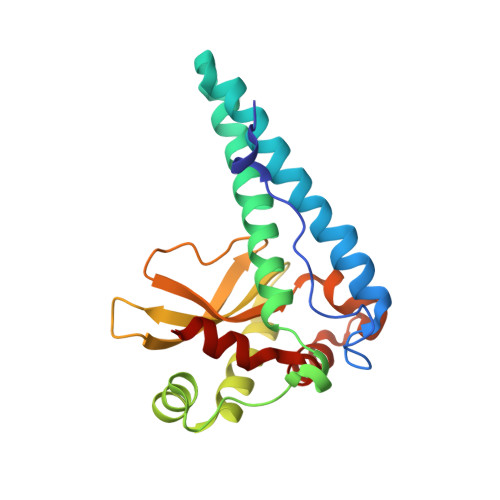Comparison of two yeast MnSODs: mitochondrial Saccharomyces cerevisiae versus cytosolic Candida albicans.
Sheng, Y., Stich, T.A., Barnese, K., Gralla, E.B., Cascio, D., Britt, R.D., Cabelli, D.E., Valentine, J.S.(2011) J Am Chem Soc 133: 20878-20889
- PubMed: 22077216
- DOI: https://doi.org/10.1021/ja2077476
- Primary Citation of Related Structures:
3QVN - PubMed Abstract:
Human MnSOD is significantly more product-inhibited than bacterial MnSODs at high concentrations of superoxide (O(2)(-)). This behavior limits the amount of H(2)O(2) produced at high [O(2)(-)]; its desirability can be explained by the multiple roles of H(2)O(2) in mammalian cells, particularly its role in signaling. To investigate the mechanism of product inhibition in MnSOD, two yeast MnSODs, one from Saccharomyces cerevisiae mitochondria (ScMnSOD) and the other from Candida albicans cytosol (CaMnSODc), were isolated and characterized. ScMnSOD and CaMnSODc are similar in catalytic kinetics, spectroscopy, and redox chemistry, and they both rest predominantly in the reduced state (unlike most other MnSODs). At high [O(2)(-)], the dismutation efficiencies of the yeast MnSODs surpass those of human and bacterial MnSODs, due to very low level of product inhibition. Optical and parallel-mode electron paramagnetic resonance (EPR) spectra suggest the presence of two Mn(3+) species in yeast Mn(3+)SODs, including the well-characterized 5-coordinate Mn(3+) species and a 6-coordinate L-Mn(3+) species with hydroxide as the putative sixth ligand (L). The first and second coordination spheres of ScMnSOD are more similar to bacterial than to human MnSOD. Gln154, an H-bond donor to the Mn-coordinated solvent molecule, is slightly further away from Mn in yeast MnSODs, which may result in their unusual resting state. Mechanistically, the high efficiency of yeast MnSODs could be ascribed to putative translocation of an outer-sphere solvent molecule, which could destabilize the inhibited complex and enhance proton transfer from protein to peroxide. Our studies on yeast MnSODs indicate the unique nature of human MnSOD in that it predominantly undergoes the inhibited pathway at high [O(2)(-)].
Organizational Affiliation:
Department of Chemistry and Biochemistry, University of California Los Angeles, 420 Westwood Plaza, Los Angeles, California 90095, USA.















